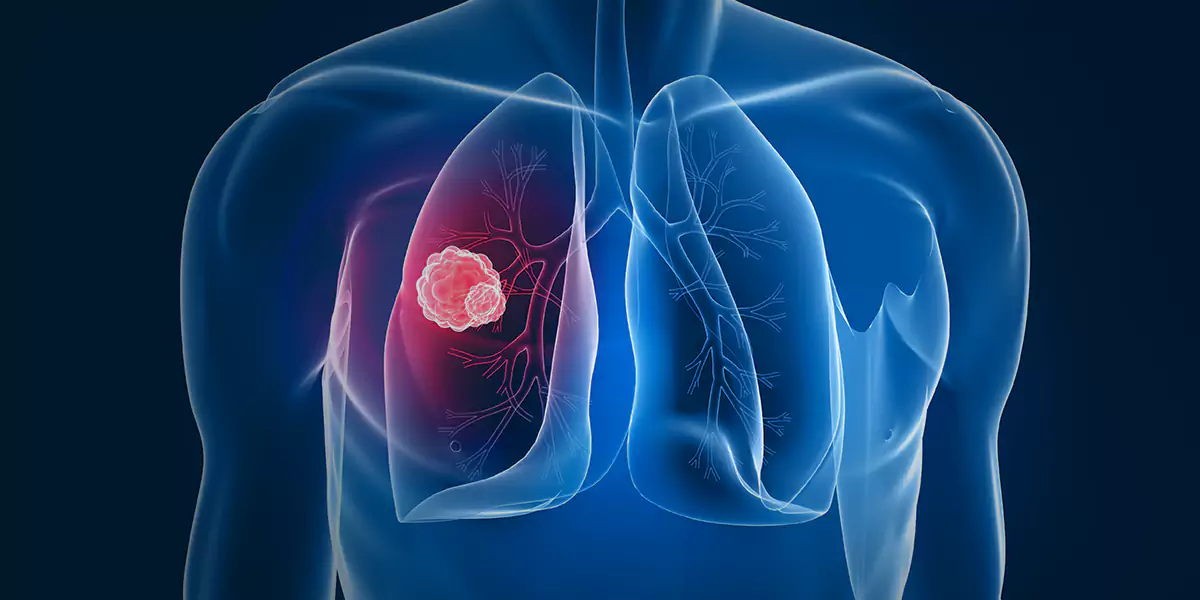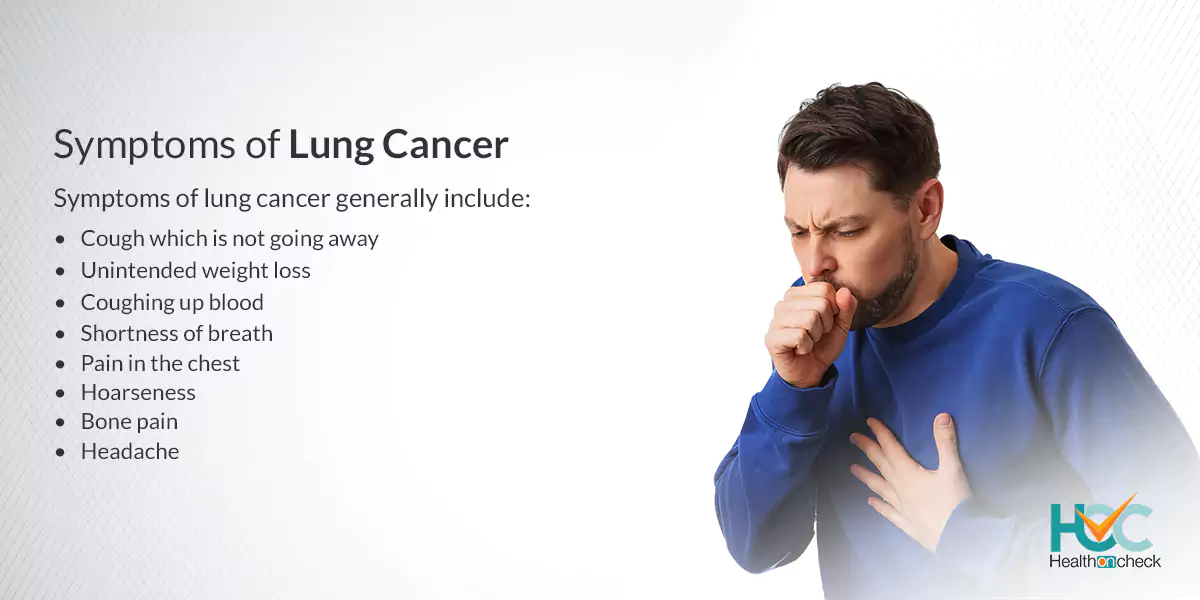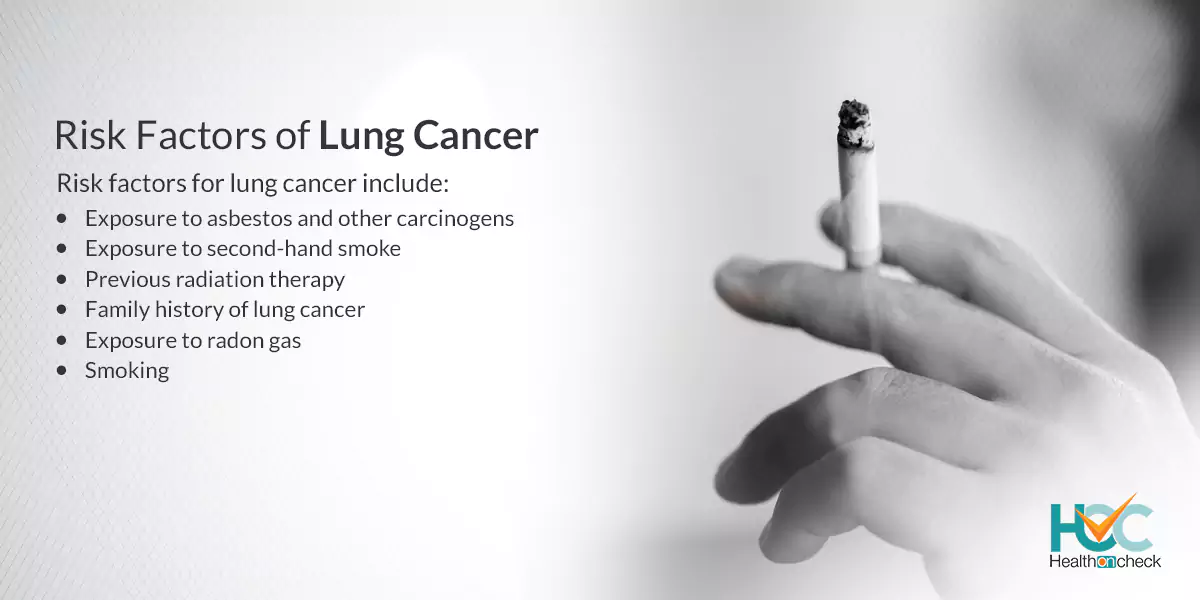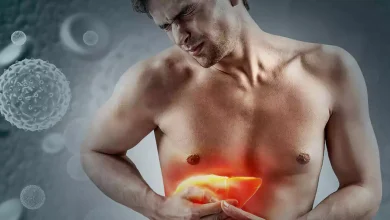What is Lung Cancer?

Lung cancer is a disease that is caused by the uncontrolled division of cells in your lungs. Your cells divide and create more copies of themselves as a part of their usual function but a few times, a mutation leads them to keep creating more of themselves which they should not. The uncontrolled division of damaged cells creates masses, or tumours, of tissue that ultimately stop your organs from functioning properly. Smokers are at the greatest risk of lung cancer, however, people who never smoked can also develop lung cancer due to other reasons. The risk of lung cancer rises with the length of period and number of cigarettes you have smoked. If you quit smoking, after smoking for many years, you can significantly lessen your risk of getting lung cancer.
What are the Types of Lung Cancer?
There are two types of lung cancer including:
– Non-small cell lung cancer (NSCLC)
It is the most common type of lung cancer and accounts for more than 80% of lung cancer cases. The common forms of NSCLC include squamous cell carcinoma and adenocarcinoma while sarcomatoid carcinoma and adenosquamous carcinoma are two less common forms of NSCLC.
– Small cell lung cancer (SCLC)
This type of lung cancer develops more rapidly and is difficult to treat as compared to NSCLC. It’s usually found as a relatively small lung tumour that’s already spread to other parts of your body. Specific types of SCLC are small cell carcinoma (also called oat cell carcinoma) and combined small cell carcinoma.
What are the Symptoms of Lung Cancer?
Lung cancer usually does not have signs and symptoms in the earliest stages and they generally start to appear when the cancer is at advanced stages.
Symptoms of lung cancer generally include:
– Cough which is not going away
– Coughing up blood
– Shortness of breath
– Pain in the chest
– Hoarseness
– Unintended weight loss
– Bone pain
– Headache
What are the Causes of Lung Cancer?
Cells that keep dividing even when they shouldn’t cause lung cancer. While cell division is a usual process, all cells have an inbuilt off switch that prevents them from dividing into more cells (senescence) or lets them die off (apoptosis) when required. The off switch stops functioning properly when a cell is divided too many times or has too many mutations.
Cancer cells are normal cells in your body that mutate and stop the off switch. Cells keep multiplying, unchecked, and start interfering with your normal cells. Cancer cells may enter into your bloodstream or lymph nodes and spread to other places in your body, starting the damage the affected parts of your body.
The causes of these changes that cause cancer in some people and not others are not clear, but some factors, such as smoking tobacco, can put you at increased risk for damage to your cells and may cause lung cancer.
What are the Risk Factors for Lung Cancer?
Risk factors for lung cancer include:
– Smoking
The number of cigarettes you smoke every day and the period you have smoked increases the risk of lung cancer. Quitting smoking can significantly reduce your risk of developing lung cancer but one can get lung cancer even after quitting it for many years.
– Exposure to second-hand smoke
Your risk of lung cancer increases even if you don’t smoke, but are exposed to second-hand smoke.
– Previous radiation therapy
Getting radiation therapy earlier in the chest to treat another type of cancer, might put you at an increased risk of developing lung cancer.
– Exposure to radon gas
The natural breakdown of uranium in soil, rock, and water produces radon that in due course becomes part of the air you breathe. When radon gas enters your body, it increases the risk of lung cancer.
– Exposure to asbestos and other carcinogens
You might get exposed to asbestos and other substances like nickel and arsenic at work which are known to cause cancer especially if you’re a smoker.
– Family history of lung cancer
If you have a family history of lung cancer then you have an increased risk of the disease.
What are the Complications of Lung Cancer?
The complications of lung cancer include:
– Shortness of breath
People with lung cancer usually experience shortness of breath because the cancer grows and creates blockage in the major airways. Lung cancer can also cause fluid buildup around the lungs, which makes it difficult for the affected lung to expand fully while you inhale.
– Coughing up blood
Lung cancer might lead to bleeding in the airway, causing you to cough up blood which can sometimes become severe.
– Pain
Advanced lung cancer which has spread to the lining of a lung or another area of the body, including a bone, can result in pain.
– Fluid in the chest
Lung cancer can cause fluid build-up in the area surrounding the affected lung in the chest cavity. Fluid accumulating in the chest can lead to shortness of breath.
– Cancer spreading to other parts of the body
Many times lung cancer spreads (metastasizes) to other portions of the body, including the brain and the bones. It can cause symptoms such as pain, nausea, headaches, or other signs and symptoms based on what part of the body is affected. If the lung cancer has spread beyond the lungs, it usually cannot be cured.
How Lung Cancer is Diagnosed?
Tests to diagnose lung cancer include:
– Imaging tests
An X-ray image of your lungs might be taken which shows an unusual mass or nodule. A CT scan can show tiny lesions in your lungs that may not be detected on an X-ray.
– Sputum cytology
If you are coughing and producing sputum, then examining the sputum under the microscope may reveal the presence of lung cancer cells.
– Tissue sample (biopsy)
Here a sample of abnormal cells is taken and sent to a lab for further examination to diagnose lung cancer. This procedure is called a biopsy.
Biopsy can be performed in various ways, such as bronchoscopy, where your doctor checks the abnormal areas of your lungs by using a lighted tube that is passed down your throat and into your lungs.
Mediastinoscopy is another form of biopsy where at the base of your neck an incision is made and then surgical tools are inserted behind your breastbone to take tissue samples from lymph nodes which are further examined to check for cancer cells.
Needle biopsy is another option, in which X-ray or CT images are used to pass a needle through your chest wall and into the lung tissue to collect the sample of suspicious cells.
What are the Treatment Options Available for Lung Cancer?
Treatments for lung cancer are created to remove cancer from your body or to slow down its growth. Treatments might get rid of cancerous cells, kill or stop them from multiplying, or direct your immune system to fight them. Some therapies are available to lessen your symptoms and relieve you from the pain. Your treatment will be based on the type of lung cancer you have, its position, the stage, and how far it is spread along with many other factors.
The treatment options available for lung cancer include:
– Surgery
During surgery your doctor may remove the tumour along with a small amount of healthy tissue around it to ensure that they don’t leave any cancer cells are not left behind. Sometimes all or part of your lung (resection) has to be removed to make sure that the cancer won’t come back.
– Radiofrequency ablation
Sometimes the cancer tumours adjacent to the outer edges of your lungs are treated with radiofrequency ablation (RFA). High-energy radio waves are used in this procedure to heat and kill cancer cells.
– Radiation therapy
High-energy beams are used in radiation therapy to destroy cancer cells. It can be used by itself separately or to help make surgery more efficient. Radiation therapy can also be used as palliative care, for shrinking tumours and controlling pain.
– Chemotherapy
Chemotherapy is usually a combination of multiple medications that are given to prevent cancer cells from growing. It might be given before or after surgery or together with other types of medication, including immunotherapy.
– Targeted drug therapy
Here special drugs are given to target the mutations to kill or slow down cancer cells. Other drugs, known as angiogenesis inhibitors, are given to prevent the tumour from making new blood vessels, which the cancer cells require to grow.
– Immunotherapy
Immunotherapy helps to reveal cancer cells to your immune system which allows your body to fight cancer.
Living with Lung Cancer
Getting diagnosed with lung cancer can make you feel a range of emotions which can be overwhelming. You should be patient and create a treatment plan after discussing it with your doctor. It’s natural to feel stressed and in such situations joining a support group can help you cope with your situation. You should share your feelings with your near and dear ones as it will make you feel lighter and better. With improvements in medical science, lung cancer can be cured, especially if it’s in the starting stages.
Whom to Consult?
If you experience any persistent signs or symptoms of lung cancer that worry you, then you should consult with your doctor and get yourself diagnosed. If you are a smoker and trying to quit smoking unsuccessfully then make an appointment with your doctor who can recommend ways to stop smoking, including medications, counselling, and nicotine replacement products.






